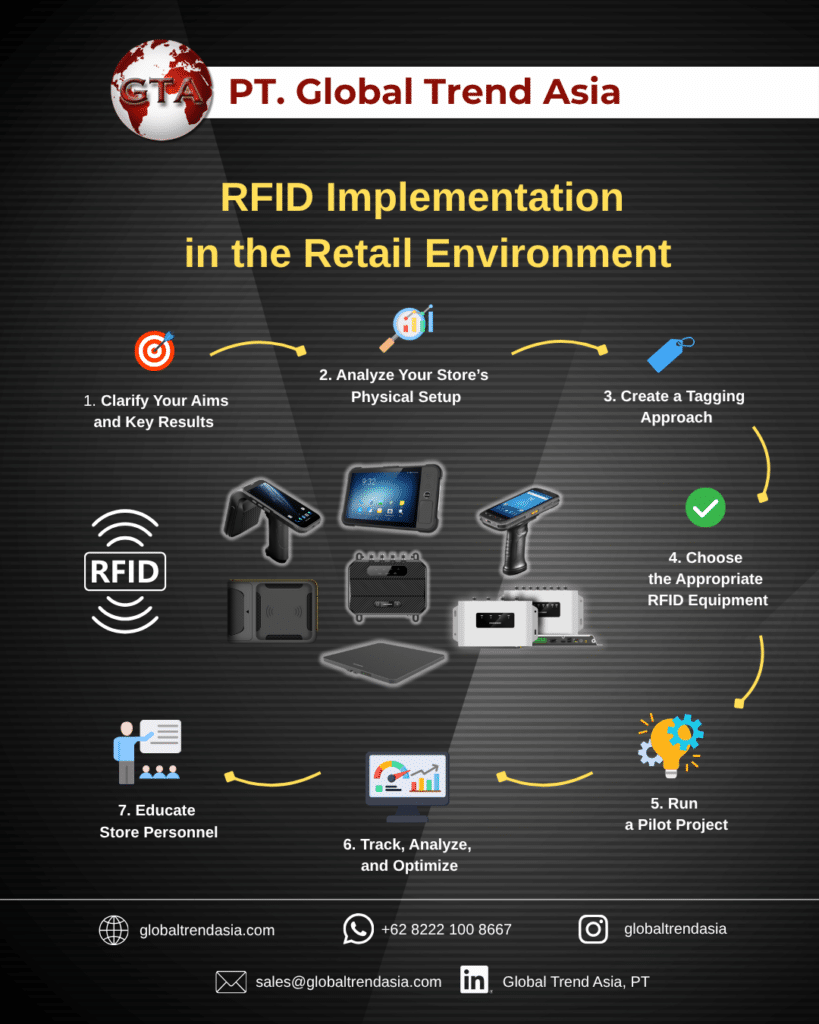Retail businesses today face increasing pressure to improve accuracy, speed, and customer experience. To meet these demands, many retailers are turning to Radio Frequency Identification (RFID). This technology offers real-time visibility of products, faster inventory processes, and stronger operational control. When implemented correctly, RFID can significantly improve store performance.

The first step in any RFID project is to define clear objectives. Retailers must understand what they want to solve. Common goals include reducing stock inaccuracies, improving replenishment speed, preventing shrinkage, and minimizing manual work. A clear objective helps guide decisions during implementation.
After defining goals, the next stage is to evaluate the store environment. Every store layout is different. Materials, fixtures, and customer flow can affect RFID performance. By studying the physical space, retailers can decide where to place antennas, readers, and verification points. A proper assessment ensures consistent and reliable data collection.
Once the environment is understood, retailers can create a tagging plan. This includes deciding which products need RFID tags, choosing the right tag type, and determining where tagging will take place—whether in the warehouse, stockroom, or on the sales floor. A strong tagging strategy ensures accurate tracking from end to end.
Choosing the right equipment also plays an important role. Each task requires a specific type of device:
- Mobile RFID readers like the Chainway C72 are ideal for daily scanning and cycle counts.
- RFID tablets such as the Chainway P80 help supervisors perform stock analysis, restocking, and reporting on the go.
- Wearable readers like the R5 allow staff to work hands-free during large inventory checks.
- Fixed readers such as the URA4 or U300 monitor product movement automatically at doors, stockrooms, or transition points.
- Desktop readers like the R3 support quick verification during receiving or checkout.

With the right equipment selected, retailers should run a pilot project. A pilot helps test accuracy, identify weak spots, and refine settings before rolling out the system across multiple stores. This step reduces risk and ensures the final implementation is strong and reliable.
After the pilot, retailers can continue with full deployment. At this stage, it is important to monitor results. RFID data can reveal out-of-stock trends, replenishment delays, and shrinkage risks. These insights help management make better decisions and improve store operations.
Another key element of successful implementation is employee training. Staff must understand how to use the devices, how to read the data, and how to include RFID tasks in their daily routine. With proper training, RFID can operate smoothly and deliver long-term benefits.
RFID technology offers significant advantages for modern retailers. It reduces labor hours, improves inventory accuracy, and strengthens customer satisfaction. When supported by the right strategy and equipment—such as solutions provided by PT Global Trend Asia—retailers can create a smarter and more efficient store environment.
Hubungi Kami Sekarang
Ingin menghadirkan event olahraga yang lebih akurat dan profesional?
Hubungi tim PT. Global Trend Asia, mitra terbaik Anda untuk solusi RFID & IoT Smart System di Indonesia.
Tim Sales & Marketing
Phone : +62 8222 100 8667
Email : sales@globaltrendasia.com
